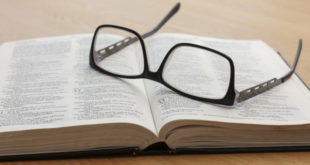RETURN TO HOW TO STUDY…SYLLABUS
Bible Perspectives: How to Study the Bible for Yourself Part II
Lesson #11
“The Road of Salvation”
- Daily Spiritual Diary Discussion
- Personal Concordance Discussion
- Homework Discussion:
- #9 Comprehensive Book Analysis:
- Class Lesson: How to Witness from the Old and New Testaments
- Sharing the Gospel
- There are many ways to witness to others about the Good News and about your faith in Jesus Christ. There are a number of printed guides that you could memorize and follow. However, most Christians do not feel comfortable with these methods because they are so confining. They do not consider the flow of conversation, the non-believers questions, responses, or deviations from the script. From experience, I have discovered that the best way to witness to others is to develop your own method which includes some of your own experiences along with some key scriptures.
Chapter Analysis Sheets #E and #F” Jonah 3 (to go to homework answers for the teacher – an example)
- Why is it important to know the Old Testament scriptures when you can simply use the New Testament ones?
- Rom 1:16 indicates that we are to witness to the Jew first and also to the Gentiles. To witness to the Jews, you must use the Old Testament because Jewish people will not accept anything from the New Testament.
- The Character of the Suffering Messiah, Jesus Christ (1-3)
- “Root out of dry ground”
= humble beginnings of the Messiah during an historic period of israel’s spiritual dryness.
- Remember there was 400 years when God was silent between the Old Testament and the New Testament.
= (see Psa 22:6)
- When Jesus hung on the cross, His face had been marred by beatings so that to look at Him, there was nothing to admire.
= in the Hebrew it means, rejected by men of stature.
= the word sorrows means “pains and disease”. Jesus bore all pain and disease on the cross.
= Jesus Christ was acquainted with the weaknesses of the flesh, which includes physical sickness, because He was fully human as well as fully divine.
- “he hath borne our griefs”
= He carried all physical illnesses on the cross.
= Jesus applied “sorrows” to physical illnessin Mat 8:17 when He healed Peter’s mother-in-law. The word, carried, means to bear punishment or chastisement.
= God, the Father, planned and sent Jesus to the cross, not men.
= The things Jesus suffered on the cross were not just for physical illness but for spiritual atonement for sin. The wording is an allusion to the Old Testament temple trespass offering for sin.
= The translation from the Hebrew says “crushed by our sins”
= The punishment for sin was paid by Jesus to bring us peace with God.
= The stripes were the marks on his back from being beaten by the cat-o-nine tails. According to Roman law, there were 39 lashes administered to a prisoner. It so happens that all physical illnesses are divided into 39 major categories. The word “healed” implies body, soul, and spirit (physically, spiritually, and emotionally).
= This tells us that all people are rebellious against God and go their own way. in other words, we are all sinners.
= All our sins, past, present and future, were put on Jesus when He hung on the cross.
- “he opened not his mouth”
=This is a prophecy that Jesus fulfilled in Mat 27:12,14
= An implied reference to the Passover lamb, the offering in Exodus that protected the Israelites from death. Jesus is the Lamb of God that takes away the sins of the world. (Joh 1:29)
= It means to die an early death, but more than that, it means shunned like a leper and separated from people. Remember that leprosy is a symbol of sin which separates man from God and results in eternal death.
= It tells us again He died for our sins.
= Jesus Christ died between two thieves on the cross, but was buried in a rich man’s tomb.
= Jesus Christ was perfect humanity with no sin in Him.
= it pleased God, the Father, to put sin and sickness upon Jesus because He was willing to fulfill God’s merciful plan of redemption for man.
= Jesus fulfilled all the Old Testament offerings listed in the book of Leviticus. There are allusions to each one of the sacrifices in this chapter.
= through Jesus the kingdom of God would prosper as many people would eventually be reconciled to God through the crucifixion.
= God would exalt Jesus by raising him from the dead and give him a position at his right hand in heaven.
- “made intercession for the transgressors”
= At God’s right hand, Jesus intercedes for us today before God, the Father.
- “My God, my God, why hast thou forsaken me?”
(1) (Mat 27:46)
- Jesus became sin on the cross (2Cor 5:21) God cannot look upon sin.
- God was separated from Jesus during the three hours of darkness when Jesus was made sin for us.
- Jesus looked down from the cross. He heard the mocking hatred of his people. In their eyes He was like a worthless worm to be crushed under foot. (6)
- The word “worm” here has a triple meaning.
- =1= It refers to Jesus reputation with the people. (Mat 27:41 Mar 10:34 fulfill the prophecy in Psa 22:7.)
- =2= It refers to Jesus face marred by beatings to the extent that He did not look human. (Isa 53:2)
- =3= The Hebrew word used here refers to a tiny, red, coccus worm that was crushed to release a red color that was used to dye the curtains of the temple red.
- Jesus body was crushed to release His blood that is used to dye our spiritual garments white. (Rev 7:13-14)
- As Jesus looked at the mocking crowd, he sees his mother there with John. According to Psa 22 Jesus acknowledges that it was God who brought about his birth to the virgin, Mary.
- Psa 22:11-13. The “strong bulls of bashan” refers to the Roman soldiers. This was a common derogatory nickname at that time.
(13) The lion was also a symbol of Rome.
- “all my bones are out of joint”
- Gravity of a body hanging on a cross causes the bones of the shoulders, arms, hands, back, and pelvis to become out of joint as the person attempts to breathe.
- “poured out like water”
- “my tongue cleaveth to my jaws”
- “they pierced my hands and my feet”
- The piercing of hands and feet is a specific detail that refers to crucifixion. The Jews had no such punishment. Capital punishment in the Jewish culture was stoning.
(14)
(14) Jesus could feel his strength draining from him.
(15) Crucifixion causes the body to perspire in great abundance. Then dehydration sets in. (Joh 19:28)
(16)
is a derogatory name for gentiles, again in reference to the Romans.
(17)
- Jesus was crucified naked which was the custom. It was the ultimate humiliation.
- The soldiers gambled for his garments (18). (Mat 27:35)
- =1= Eternal life is a free gift. It is not earned or deserved.
- Old Testament: Isa 53:6 or Isa 64:6
- New Testament: Rom 3:23
- Old Testament: Isa 53:10, 4, 6 or Jer 31:3
- New Testament: 2Tim 4:1 and Joh 14:6
- Old Testament: Isa 53 or Psa 22
- The Holy Trinity in the Old Testament: Gen 1:25 and Isa 48:16-19
- New Testament: Rom 5:1
- Old Testament: Isa 53:5 and Isa 49:24
- New Testament: Rom 10:9-10
- How can you know for sure are saved and have eternal life?
- Old Testament: Isa 41:8
- New Testament: Jam 2:23
- Types of Bible Study Methods:
- #9 Comprehensive Book Analysis
- In the same way that you studied chapter one, chapter two, and chapter three of the book of Jonah, you will study chapter 4.
- Solving the Riddle for the prize:
- There is a strange event that occurs at the end of book of Jonah (4:6-10). You are to discover the New Testament significance of this event by discovering the meaning of the objects involved in light of the rest of the Bible. Like many Bible passages, there is a surface interpretation and there is a deep interpretation. You are to discover the deep interpretation.
- To help you: As you study this week, think about the meaning of the following objects just as you would interpret any New Testament parable: the east wind, the sun, the gourd, and the worm.
: Chapter Analysis Sheets #C, #D, and Book Summary Sheets #G, and #H —
Jonah 4
- Work on your Spiritual Diary for 15 minutes for 6 days.
- You have established a good pattern. Keep it up!
- Continue the Personal Concordance.
- Use the Comprehensive Book Analysis: Chapter Analysis sheets #C, #D, #G, and #H
Jonah 4
- Day 1 = Read Jonah chapter 4. Work on the “Chapter Analysis” on page #C.
- “Passage Description”
- Summarize the chapter in your own words. Do not interpret what is being said here or why. Only state the facts.
- Day 2 = Read Jonah chapter 4 through and meditate on it verse by verse. Write on a separate piece of paper any outstanding observations.
- Day 3 = Read Jonah chapter 4. Complete the two left hand columns on sheet #D using the notes you wrote from the previous day.
- Notice that in the left two columns one is titled “Verse”. This is the verse that relates to the observation you made.
- Day 4 = Read Jonah chapter 4. Fill out the two right hand columns on sheet #D.
- Notice that in the right two columns, one is titled, “Verse”. This is the verse that prompts any questions or problems that occur.
- Day 5 = Complete page #G.
- Day 6 = Complete page #H.
Homework Page #C
#9 Comprehensive Book Analysis
Chapter Analysis
Date:
Passage: Jonah 4
Passage Description:
Homework Page #D
#9 Comprehensive Book Analysis
Chapter Analysis: Jonah 4
| Verse: | Observations: | Verse: | Questions and Answers: |
|
|
|
Homework Sheet #G
#9 Comprehensive Book Analysis
Book Summary
Book: Jonah Date:
Book Title:
Final Outline of the Book (Keep the outline short and simple):
Sheet #H
#9 Comprehensive Book Analysis: Book Summary
Main Themes (What main themes did you discover in the book?)
Main Conclusions (What important things can one learn from this book?)
Final Application:
 A Lamp Unto My Feet Bible Study Website
A Lamp Unto My Feet Bible Study Website


